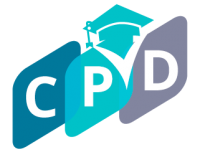Introduction
Selecting the right storybooks for children is a pivotal aspect of nurturing their love for reading and promoting language development. The world of children’s literature offers a vast array of choices, each tailored to specific age groups and developmental stages. Understanding the importance of age-appropriate reading materials and how they cater to children’s evolving needs is essential for fostering a positive reading experience. In this article, we will explore the significance of choosing the right storybooks for different age groups and offer guidance on age-appropriate reading selection.
Early Childhood (Ages 0-3)
For infants and toddlers, the focus is on engaging their senses and introducing them to the joy of storytelling. Board books with vibrant illustrations, simple texts, and tactile features are ideal for this age group. Books that introduce basic concepts such as colors, shapes, and animals are both educational and enjoyable. Repetitive phrases and rhymes are especially engaging for young children, as they help develop early language skills.
Preschool and Kindergarten (Ages 3-5)
As children enter the preschool and kindergarten years, they become more curious and inquisitive. Picture books with captivating illustrations and relatable stories capture their attention and imagination. Look for books that explore themes of friendship, emotions, and everyday experiences. Simple narratives with predictable storylines allow young readers to follow the plot and predict what might happen next.
Early Elementary (Ages 6-8)
Beginning readers in early elementary school are eager to explore the world of independent reading. Consider chapter books with larger font sizes and engaging illustrations to make the transition smoother. Look for age-appropriate themes and characters that resonate with this age group. Series books with recurring characters offer continuity and familiarity, encouraging children to delve deeper into reading.
Middle Elementary (Ages 9-11)
Middle elementary readers are ready for more complex plots and richer language. Chapter books with intriguing plots, diverse characters, and age-appropriate challenges appeal to this age group. Fantasy and adventure genres often captivate their imaginations, allowing them to explore new worlds and ideas. Non-fiction books on topics of interest can also inspire their curiosity and expand their knowledge.
Preteens and Tweens (Ages 12-14)
Preteens and tweens are on the cusp of adolescence, seeking stories that reflect their changing interests and emotions. Young adult novels with relatable protagonists and themes of self-discovery resonate with this age group. Engaging narratives that explore identity, friendship, and coming-of-age experiences appeal to their evolving perspectives and emotions.
Conclusion
Choosing the right storybooks for different age groups is vital for nurturing a lifelong love for reading and promoting language development. From board books for infants to young adult novels for preteens, age-appropriate reading materials cater to children’s evolving needs and interests. By providing children with books that capture their imagination, inspire curiosity, and resonate with their experiences, we set them on a path of continuous learning, exploration, and a lifelong appreciation for the magic of storytelling.
